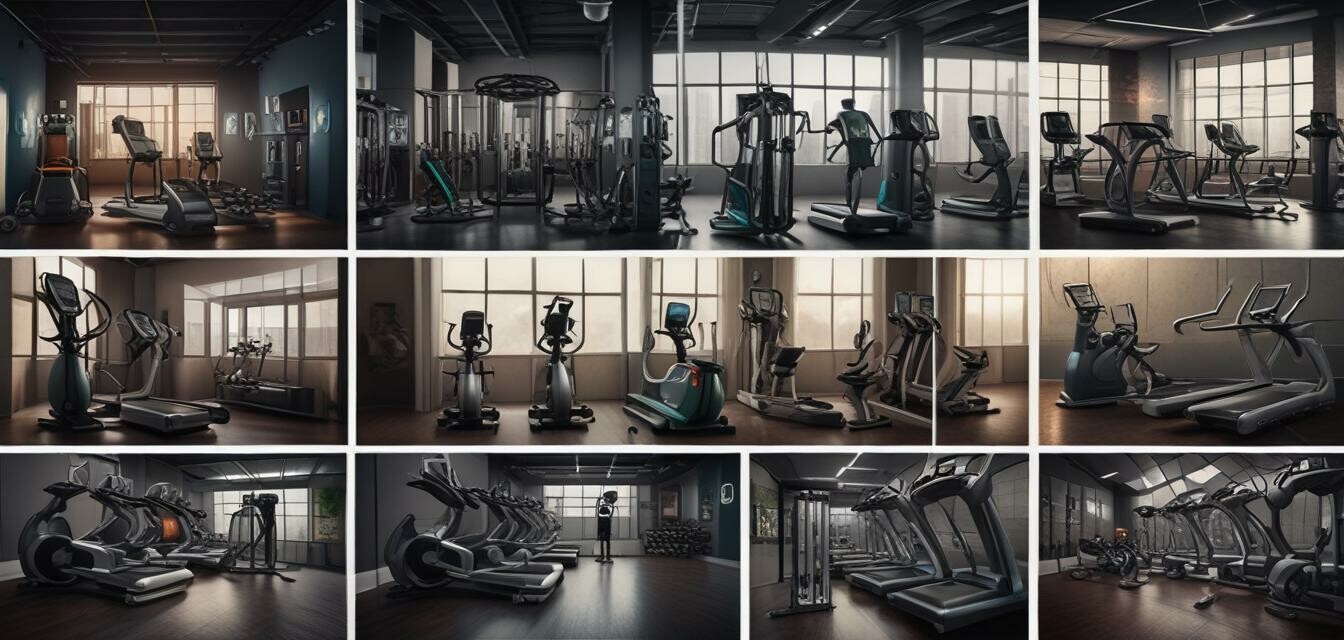
Evolution of Fitness Equipment in the Last Decade
Key Takeaways
- Fitness equipment has evolved significantly in terms of technology and design over the past ten years.
- Consumer preferences are shifting towards smart technology and multifunctional gear.
- Home gyms have become increasingly popular, influencing manufacturers to create more compact solutions.
- The importance of sustainability in product design has risen, with many brands adopting eco-friendly practices.
- Online connectivity and personalized digital training experiences are now standard features in many fitness machines.
The world of fitness equipment has undergone remarkable transformations over the last decade. From the introduction of smart technology to the increasing emphasis on compact home gym setups, the fitness landscape is more dynamic than ever. This article reflects on the significant innovations, industry shifts, and consumer preferences that have shaped modern exercise gear, allowing you to better understand how to equip your workout space.
Technological Advancements
With the rise of the digital age, fitness equipment has embraced technology like never before. Here are some key advancements:
| Type of Equipment | Technological Features |
|---|---|
| Cardio Machines | Integration with apps, heart rate monitoring, and virtual workout experiences. |
| Strength Training Equipment | Smart weights that adjust resistance, tracking software, and form correction features. |
| Fitness Accessories | Wearable technology, smart yoga mats, and connectivity with personal devices. |
The rise of smart fitness equipment
Smart fitness equipment, including smartwatches, fitness trackers, and connected machines, have gained immense popularity. These devices allow users to monitor their workouts in real-time, with features like:
- Personalized workout plans based on user data
- Real-time feedback and analytics
- Community engagement through challenges and leaderboards
Consumer Trends Shaping Fitness Equipment
As consumer preferences evolve, manufacturers are adapting their product lines accordingly. Here are some notable trends:
- Home Gym Culture: The trend towards setting up home gyms has surged, particularly due to recent global events. Consumers are searching for compact, multi-functional equipment that fits their living spaces.
- Focus on Sustainability: More consumers are concerned about the environmental impact of their purchases. Brands are responding by developing eco-friendly materials and sustainable production practices.
- Personalization: Fitness gear that offers customization options or personalized workout experiences has become increasingly popular. Users are looking for ways to make their fitness journey unique.
Emerging Fitness Equipment Trends
In addition to the above trends, several innovations have emerged in fitness equipment that are worth noting:
- Modular fitness equipment that allows users to adapt and expand their setups according to their needs.
- Incorporation of Virtual Reality (VR) in workouts, providing immersive exercise experiences.
- The rise of fitness community apps that facilitate social interactions and potential group workouts from home.
Comparative Analysis of Traditional vs. Modern Equipment
| Features | Traditional Equipment | Modern Equipment |
|---|---|---|
| Functionality | Limited to basic exercises | Offers multiple functions and smart features |
| Design | Bulky and space-consuming | Compact and stylish, designed for aesthetics |
| Technology | Minimal technology integration | Highly integrated with smart tech and apps |
| Workout Monitoring | Manual tracking | Automated analytics and feedback |
The Future of Fitness Equipment
Looking ahead, we can expect further innovations in fitness equipment. Here are some predictions based on current trends:
- Increased Use of AI: More equipment will utilize artificial intelligence to provide tailored workout plans and adjustments.
- Greater Emphasis on Recovery Tools: Additional focus on the importance of recovery equipment in fitness routines.
- Expanding Virtual Fitness: Remote learning and virtual classes will continue to integrate with home equipment purchases.
Staying Informed
Consumers should stay updated about the latest innovations and advancements in fitness equipment. Resources like our News and Trends section can help you keep track of industry shifts.
Tips for Choosing Fitness Equipment
- Assess your fitness goals to determine which type of equipment you need.
- Research consumer reviews and expert comparisons to make informed decisions.
- Consider your space limitations when selecting equipment.
- Look for equipment that offers multiple functionalities to maximize your investment.
- Stay updated with trends and technology to ensure your equipment remains relevant.
Pros
- Technology-enhanced gear provides valuable insights for workouts.
- Wide variety of options available for different fitness needs.
- Compact modern solutions save space while maximizing functionality.
Cons
- Higher initial cost for smart fitness equipment compared to traditional options.
- Learning curve for using advanced features and technology.
- Dependence on internet connectivity for many smart features.
The evolution of fitness equipment over the last decade exemplifies how technology and consumer preferences have reshaped the industry. By understanding these changes, consumers can make more informed decisions and obtain the best equipment suited to their lifestyle. Explore our detailed Buying Guides for additional insights on selecting equipment that aligns with your fitness goals.